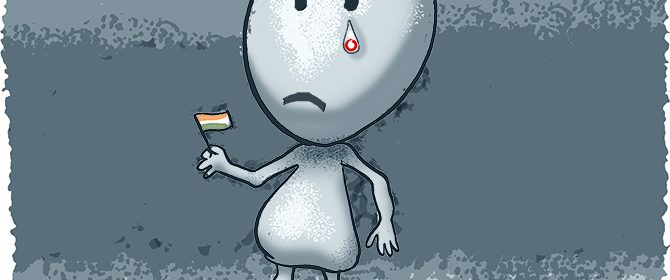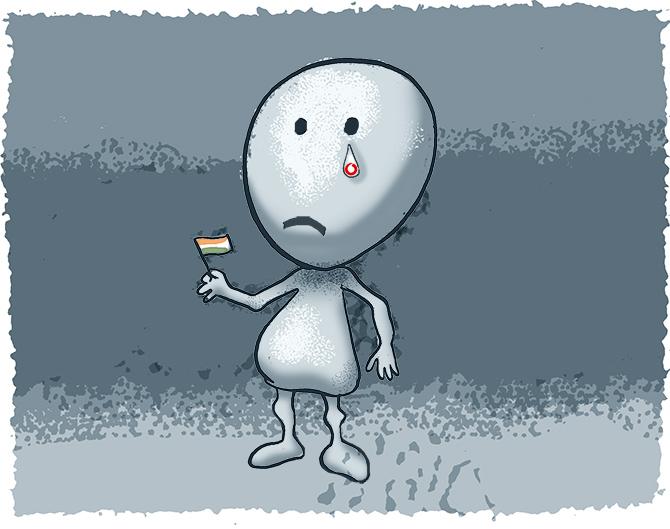What happens if Vodafone Idea isn’t out of the woods in 4 years?

If VIL is unable to repay the interest on its spectrum dues, the government can move towards converting those dues into more equity. To get its house in order in four years, VIL needs to do two key things apart from improving its operational efficiencies. It needs to raise fresh funds quickly and increase tariffs, says Surajeet Dasgupta.
The announcement that the government had acquired 35.8 per cent in Vodafone-Idea Ltd (VIL) sparked off a debate on the consequences of the move for the country’s troubled telecom business.
This development was the result of VIL accepting the one-time opportunity offered by the government to convert into equity the interest amount arising on the four-year moratorium on payments for spectrum and dues on adjusted gross revenue (AGR).
Some analysts and competing telcos said VIL has been given a reprieve that only postpones the inevitable private duopoly in mobile telephony.
They predict that VIL will face a herculean task repaying its dues once the moratorium is over.
If it fails to do so, the government might be forced to take the option available to it to convert the due amount pertaining to the deferred payment at the end of the morotorium also into equity, increasing its holding further.
Already the single largest shareholder in VIL — post-conversion, Vodafone plc and Idea together own 46.3 per cent — the government may end up with yet another troubled telco in addition to BSNL, the all-India service provider, and MTNL, service provider for Mumbai and Delhi.
VIL’s top management led by CEO Ravinder Takkar is confident that the liquidity problem is over.
In a video presser, he downplayed the prospect of government interference or the possibility of a board seat for the new shareholder.
Aditya Birla group and Vodafone plc will remain in control, he assured a sceptical media.
VIL’s losses rose from Rs 6,985 crore in Q4 FY2021 to Rs 7,144 crore in Q2 FY2022.
In the same period, revenues shrank from Rs 9,607 crore to Rs 9,406 crore.
The Department of Telecommunications (DoT) backed Takkar, emphasising that VIL would not be considered a public sector company but run professionally and independently.
DoT underlined the intention behind the move: To provide the industry some relief.
It would sell its VIL stake at an “appropriate time”.
VIL shares were converted at par; if the share price goes up, there is a decent upside to this buy as well.
CLSA estimates that the four-year moratorium will lead to a cash flow saving of Rs 80,300 crore for VIL till FY25.
So it will have more leeway to invest (especially as telcos move towards 5G), stem the haemorrhaging of its customer base (see chart) and move its 2G and 3G subscribers, which account for 55 per cent of its 253 million subscribers, to 4G (for example, Reliance Jio has only 4G customers).
That way, it can increase average revenue per subscriber /user in a month (ARPU).
However, analysts say that VIL will find it difficult to pay its liabilities of around Rs 159,000 crore to the government after the moratorium, which include spectrum dues of Rs 108,000 crore and AGR dues of Rs 50,400 crore, until its cash flows improve substantially.
They agree that the company would need an ARPU of Rs 280-300 to achieve cash breakeven.
In other words, in four years VIL has to not only stop the tide of losing subscribers but also increase its ARPU by about three times from the current Rs 109.
The point here is that if VIL is unable to repay the interest on its spectrum dues, the government can move towards converting those dues into more equity.
Though the government — judging by its current mood — has made it clear that it is not interested in doing so, VIL will be in the hot seat in that eventuality.
To get its house in order in four years, VIL needs to do two key things apart from improving its operational efficiencies.
It needs to raise fresh funds quickly and increase tariffs.
The VIL board had cleared a Rs 25,000-crore fund-raising exercise back in September 2020 but despite numerous promises and deadlines, that is still to happen.
Recently, Takkar said the government’s backing has allayed potential investors’ misgivings and a deal is expected soon.
The big question, of course, is whether prospective investors see value in having the government as the largest single shareholder and the two promoters diluting their stake substantially from 72 to 46 per cent.
Citibank and Credit Suisse suggest that investors may view these developments favourably if the government involvement were to imply a more supportive policy environment.
Banks, too, will be more ready to restructure its loans with the government backing the company.
The government’s stake could also get diluted and there could be a possibility of it selling part of it to the prospective investor.
Equally, the possibility of increasing subscriber churn with more government control and an eventual merger with BSNL are downsides.
The other key area is tariff increases.
From VIL’s point of view, the good thing is the government’s nudge to all telcos last November that saw prepaid tariffs rise 20 per cent.
Telcos say they have informally indicated to the government an overall 40 per cent increase over 12 to 18 months, which precludes the possibility of a continuing price war that brought VIL to its knees in the first place.
That would help VIL’s sagging ARPUs, currently the lowest amongst the private telcos, and it meets one of the management’s persistent demands.
As for VIL’s competitors, they appear to have received the clear message that the government wants at least three players in mobile telephony.
The government’s shareholding doesn’t worry them either.
They believe that will continue to nibble at VIL’s market share, more so once 5G services are launched.
Still, it is worth wondering what the government will do if VIL isn’t out of the woods in four years, not least because reviving BSNL and MTNL remain huge challenges.
A Rs 750-crore revival package has been finalised but BSNL’s inordinate delay in launching 4G services, which looks possible only by the end of this year when competitors will be offering 5G, suggests that it’s also the government that’s taking a tough call on VIL.
Source: Read Full Article

